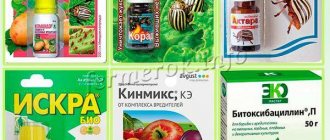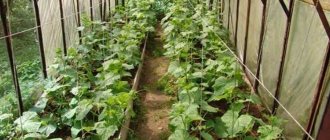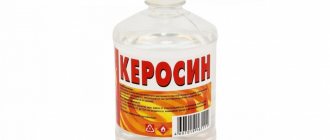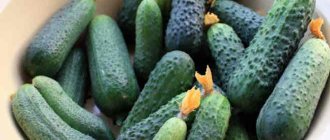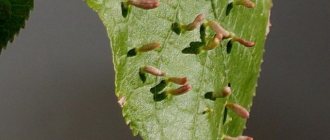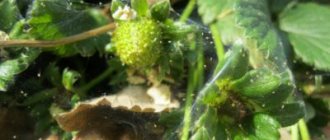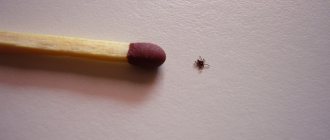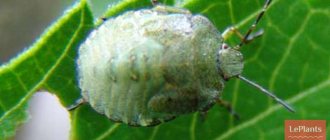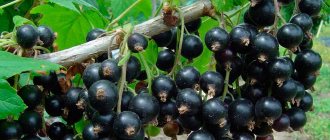Cucumber is a popular vegetable that takes pride of place on the table all year round in fresh, pickled or pickled form. Cucumbers are tasty and juicy, which is why they are very popular among pests. Some insects make holes in the leaves, others suck the juices from the stems and leaves, others chew through the seedlings or even settle in the embryos of cucumber seeds.
During the growing season, pest invasions cannot be avoided. Therefore, we suggest that you familiarize yourself with the most common pests of cucumbers and agrotechnical, folk, biological and chemical methods of combating them.
Biological insecticides for cucumber pest control
| Drug name | Pest against which treatment is carried out | Consumption rate of the drug (kg/ha, l/ha) | Packaging |
| Aktofit k.e. (aversectin C, 0.2%) | Spider mites, aphids, thrips | 50-200 ml per 20 liters of water | 0.04 l, 0.1 l, 0.2 l, 0.4 l, 0.9 l |
| Aktarofit, k.e. | Spider mites, aphids, thrips, whitefly | 40 ml per 20 liters of water | 0.2 l, 1 l |
| Bitoxibacillin, e.g. | Spider mites, aphids | 80-100 ml per 10 liters of water | 35 ml, 0.125 l, 1 l, 5 l, 10 |
| Boverin | Wireworm, whitefly, thrips, mole cricket | 0.2-0.5 l per 10 l of water | 1 l, 200 g |
| Verticillin | Whitefly, aphids, spider mites | 100-500 ml per 10 liters of water | 1 l |
| Metarizin | Cabbage grass, wireworm | 100 ml per 10 liters of water | 1 l, 5 l |
| Nematophagin | Soil pests (nematode) | 0.1-0.3 ml per 10 liters of water | 0.33 l, 1 l, 5 l |
| Fitoverm-M, k.e. (aversectin-S, 2 g/l) | Mites, thrips, aphids | 0.2-2 ml/1 l water | 2 ml |
Whitefly on cucumbers in a greenhouse
Description of whitefly
Whitefly is a moth with white wings and a yellowish body. It is no more than one and a half millimeters in length. Has small mustaches.
She prefers a warm and humid climate, so greenhouses are her favorite place to live. In the south, it can live in the ground, but in the middle zone it is too cold for it. It overwinters in compost, in uncleaned leaves in a greenhouse.
The whitefly feeds on plant sap and can literally drink them all.
The consequences of whiteflies on cucumbers are disastrous: they stop developing, become brittle, white spots appear on the leaves, then they curl up and dry out.
A sticky layer may appear on the leaves - traces of the vital activity of the parasite. This plaque attracts ants and fungi into the greenhouse. Which looks like a black coating, completely covers the leaves and prevents already weakened plants from receiving sunlight.
How to treat cucumbers against whiteflies
This parasite is very difficult to fight. Because in the larval stage they are covered with a waxy coating, and they are not afraid of chemicals. After some time, butterflies hatch from them and the whole process is repeated again. Therefore, it is easier to prevent their appearance in the greenhouse than to try to remove them later.
To begin, carefully inspect the purchased seedlings, checking the leaves above and below. Be sure to quarantine it separately from other cucumbers. If after 3 weeks everything is in order, you can plant it in a greenhouse.
Do not move plants from an already infested greenhouse to a new one. This way you can spread the whitefly throughout the entire area.
Since these moths love damp and warm areas, be sure to ventilate the greenhouse. Avoid crowding of plants.
If infection does occur. Then use chemical preparations for whiteflies such as Fitoverm, Fufanol, Karbofos. Use them according to the instructions.
Chemical preparations such as Aktelik, Kamandor and Aktara are best used only outdoors, otherwise you may inhale chemical fumes. To prolong the effect of the preparations, add soap to them for better adhesion to the leaf.
If there are few whiteflies, then you can try to get rid of it using traditional methods.
- Prepare a solution of tar soap and dilute it with water in a ratio of 1:6. Spray the plants with it every 7 days until the parasites are completely eliminated.
- Garlic solution works well to reduce the butterfly population. To do this, grate 3 cloves of garlic and add a liter of water. Leave for a day in a dark place, then strain and spray the plants.
- Yarrow infusion also helps well in the fight against this moth. Pour 100 grams of fresh herbs with a liter of warm water and leave for 2 days. Then strain and spray the plant. No more than once every 7 days.
Chemical insecticides for cucumber pest control
| Name of insecticide | Pest against which treatment is carried out | Consumption rate | Packaging |
| Aktara 25 WG, v.g. (thiamethoxam, 250 g/l) | Aphids, tobacco thrips, whitefly | 0,06-0,08 | 1.4 g, 6 g, 250 g |
| Aktelik 500 EU, e.g. (pirimiphos-methyl, 500 g/l) | Whitefly mites, aphids, thrips | 0,3-1,5 3,0-5,0 | 6 ml, 100 ml, 5 l |
| Anti-slug, c. (metaldehyde 60 g/kg) | Slugs | 20 g per 10 sq.m. | 20 g, 60 g, 300 g, 800 g |
| Antikhrushch k.s. (imidacloprid, 100 g/l + bifenthrin, 100 g/l) | Wireworm larvae | 0.8-1.0 l | 10 ml, 30 ml, 150 ml, 1 l, 5 l |
| Bazudin, s.p. (diazinon - 40%) | Soil pests | 20 g per sq.m. | 20 g |
| Bi-58 new, k.e. (dimethoate, 400 g/l) | Mites, aphids, thrips | 0,5-1,0 | 1 l, 5 l, 10 l |
| Vertimek 018 EC k.e. (abamectin, 18 g/l) | Thrips, aphids, whitefly, spider mites | 0,8-1,2 | 10 ml, 100 ml, 1 l |
| Vitabyte, v.g. (imidacloprid, 1.5%) | Ants | 2.5 g/sq.m | 100 g |
| Decis f-lux 25 EU, k.e. (deltamethrin, 25 g/kg) | Aphids, thrips, sprout fly | 0,2-0,3 | 5 l |
| Exirel, S.E. (cyantranilprole, 100 g/l) | Whitefly, aphids, thrips | 0,25-0,50 | 250 ml, 1 l |
| Confidor Maxi (Provanto Maxi), v.g. (imidacloprid, 700 g/l) | Pest complex | 1 g/10 l of water per 2 acres | 5 ml, 500 ml |
| Movento k.s. (spirotetramat, 100 g/l) | Complex of sucking pests | 0,75-1,0 | 1 l |
| Mospilan, v.p. (acetamiprid, 200 g/kg) | Whitefly, aphid | 0,15-0,20 | 50 g, 200 g, 400 g, 1 kg |
| MuravNET, g. (S-methoprene - 0.75 g/kg, permethrin - 2.5 g/kg, cypermethrin - 2.5 g/kg, piperonyl butoxide - 7.5 g/kg) | Ants | 30 g per 10 sq.m. | 30 g |
| Nurel D, Ph.D. (chlorpyrifos, 500 g/l+cypenrmethrin, 50 g/l) | Aphids, thrips, flies, soil pests | 0,8-1,2 | 7 ml, 5 l |
| Slugstop, g. (metaldehyde (60 g/kg) | Slugs, snails | 30 g per 10 sq.m. | 30 g |
| Provanto Edema (Proteus) m.d. (thiacloprid, 100 g/l + deltamethrin, 10 g/l) | Thrips, aphids, whitefly | 0,5-0,75 | 14 ml, 50 ml, 500 ml, 5 l |
| Provanto Mite (Envidor) c.s. (spirodiclofen 240 g/l) | Spider mite | 4-6 ml per 10 liters of water | 5 ml, 60 ml |
| Let's brand the v.g. (emamectin benzoate, 50 g/kg) | Spider mite | 0,2-0,5 | 4 g, 500 g, 1 kg |
| Regent 20 G, g. (fipronil, 20 g/kg) | Complex of soil pests | 5-10 | 10 kg |
| Force 1.5 G, g. (tefluthrin, 15 g/kg) | Complex of soil pests | 5-10 | 20 kg |
Now you know what insects damage cucumbers and how to deal with them. If you still have questions about methods of protecting cucumbers from pests, you can leave them in the comments under the publication.
We wish you not to encounter harmful insects in your field or greenhouse and get a high and high-quality cucumber harvest!
If your plants have any problem (disease or pest) and you need help - leave a comment with a photo of your plants - our agronomist will help and answer questions.
If you find an error, please select a piece of text and press Ctrl+Enter.
Spider mites on cucumbers in a greenhouse
Signs of spider mites on cucumbers
The spider mite is an insect almost invisible to the human eye that can destroy the entire crop of cucumbers.
This is a common pest and is found not only on cucumbers, but on many other garden crops and even flowers. This small and almost invisible insect reproduces very quickly and is capable of destroying an entire plant in a short time. And if you don’t start fighting it in time, it can populate the entire greenhouse.
Pests on cucumbers - spider mites
Greenhouses and greenhouses are his favorite place. It is very warm there, almost always the temperature is around 30 degrees. And a warm climate is very suitable for the reproduction of spider mites and for the development of their larvae. Therefore, in hot weather it can also appear on ground cucumbers. It overwinters in the corners of the greenhouse or in fallen leaves, and in the spring it moves to seedlings.
The parasite feeds on the cell sap that is in the plant, thereby destroying the chlorophyll that the plant needs for life.
Damaged cells die and the plant weakens. White spots on cucumber leaves are one of the signs of spider mites. Because the tick itself is difficult to notice. After all, its size does not exceed one millimeter. First, white dots appear on the leaves, then spots appear on the underside of the leaf, and eventually the leaf turns yellow and dries out.
The second sign is that a very thin light web appears on the plant. It seems to envelop the plant like a cocoon.
Cobwebs on a cucumber are a clear sign of spider mite infestation
Other signs of this parasite are more general. These include weakness of the plant, slowing of its growth, and the base of the cucumber begins to wither and dry out.
Pest control measures
This parasite is difficult to fight. Since he quickly gets used to various poisons. Therefore, it is important to know which methods of controlling whiteflies are the most effective.
First, take a good look at the plant. Cut off the dried leaves and burn them. If the plant dries out completely, you will have to dig it up and burn it to prevent further spread of the infection. Lightly infected plants can be sprayed with chemical and organic preparations.
Biological products include substances that do not harm the plant, but kill parasites. The best of them: Fitoverm, Akarin, Kleschevit.
Fitoverm - when it gets on the body of a tick, it paralyzes its nervous system and thereby kills it.
The drug begins to actively act 6 hours after spraying in the greenhouse. In open ground after 10 hours. And the duration of its action in a greenhouse is up to 20 days, and outdoors up to 15.
The substance is quickly removed from the plant - on the third day after spraying the crop can be harvested.
But as already mentioned, the tick quickly gets used to this product, so it should be used rarely. It is best during the period of flowering and active fruiting.
Akarin - acts on parasites in the same way as Fitoverm, with one significant difference - ticks cannot develop immunity to it. Therefore, the product can be used for a long time. In the greenhouse, it begins to be active 4 hours after application.
Tick-borne ticks also act on the nervous system of the parasite, causing paralysis. The product works better in hot weather; at temperatures below 20 degrees its degree of action is significantly reduced.
In a greenhouse it lasts up to 10 days, in open ground for a week. Unfortunately, the drug does not kill larvae, but only mature individuals. And over time, they develop immunity to it. But the drug is quickly removed from the plant. The fruits can be eaten 2 days after spraying with Kleschevit.
In addition to biological products, there are acaricides. These are powerful chemicals. Floramite, Oberon, Apollo, Nissoran are the most popular of them. They guarantee quick elimination of spider mites.
Floramite - acts on ticks by increasing their activity. After some time they stop eating and die. The product is valid for 4 days, but can only be used once a year. The advantages of this drug include the fact that it is not washed off by rain for 6 hours, and the fruits can be eaten 3 days after use.
Oberon - effectively destroys ticks in all stages of growth - from larvae to full-fledged individuals. The duration of the drug lasts up to 25 days.
Apollo - the drug deprives ticks of the ability to reproduce. Destroys larvae.
It is a potent remedy and can be used no more than 2 times per season.
Nissoran - under the influence of this drug, the larvae die, but the adults do not, but they lay larvae that will not be able to reproduce. The product is effective for up to 50 days and is not addictive to parasites.
Please pay special attention that all acaricidal drugs are dangerous for people. If it gets on the mucous membrane, rinse it with running water. Treat plants only in closed clothing and gloves. Do not eat treated fruits immediately after spraying with the preparations. After handling medications, wash your hands well and rinse your mouth.
In addition to chemicals, there are also folk remedies to combat ticks. But they are used only if the area of infection is small. Among these remedies: ammonia, hydrogen peroxide, soap and herbal decoctions.
- 2 tablespoons of 3% hydrogen peroxide are diluted in a liter of water and sprayed on infected plants once a week for a month.
- 30 ml of alcohol is diluted in a liter of water and sprayed on the plants and walls of the greenhouse. This is also a nitrogen supplement for the plant.
Among the herbs, infusions of dandelion, sorrel or calendula help well in combating pests.
- 200 grams of calendula are infused in 2 liters of water for 5 days and sprayed on infected plants.
- Pour a kilogram of dandelion greens into a bucket of water and leave for 8 days, then also spray the cucumbers.
Infected leaves are treated with soapy water. To do this, 100 grams of soap are grated and soaked in 5 liters of water for 5 days.
All folk remedies are washed away by rain. And after that they must be applied again. Remember that they can only be used for mild damage; if they do not help, you should turn to other methods of pest control.
Video: Spider mites on cucumbers
How to treat cruciferous (black) flea beetle
The cruciferous flea beetle is a small (up to 3 mm) bug of black color and round shape, most often with a glossy shiny shell, shimmering green or blue. Pests become active already in mid-spring, when the air temperature rises to 12–15ºС. The larvae are not particularly picky, feeding on roots and greens. The leaves quickly turn into a sieve and dry.
The black flea beetle is easily identified by its long legs
The main thing in the fight against cruciferous flea beetle is to calculate the time correctly. Early varieties of cucumbers are planted as early as possible (in April), late-ripening ones - later (in the second ten days of July). Thus, before the beginning of May or mid-August, when the massive appearance of these insects is noted, the cucumber bushes will have time not only to grow, but also to “coarse” slightly. The pest prefers young, soft leaves, so there is every chance that the flea will “pass by.”
The black flea beetle received its official name due to the fact that, until more suitable food becomes available, it feeds on weeds from the Cruciferous family (colts, shepherd's purse, wild radish). Therefore, you need to weed the beds regularly. Any covering material - spunbond, lutrasil, agrospan - will also provide effective protection. It is advisable to pull it over the arcs and remove it when the bushes are strong enough.
The black flea beetle turns cucumber leaves into a real sieve
The black flea beetle is very sensitive to strong odors. Therefore, cucumbers in the greenhouse and in the open ground alternate with dill, garlic, basil, and coriander. The beds are surrounded by a “barrier” of marigolds, nasturtiums, calendula, and wormwood.
Folk remedies
The experience of many gardeners shows that the black flea beetle rarely attacks “dirty” plants. Therefore, cucumber bushes, especially young ones, are regularly sprinkled with crushed chalk or activated carbon, sifted wood ash, tobacco dust, and hot pepper. The powder is poured into a gauze bag and shaken over the plants. It is best to carry out the procedure early in the morning, when the leaves are still wet. Mothballs are scattered in moderate quantities in the grooves between the bushes.
For spraying, use solutions of the following products:
- Minced garlic and tomato tops. The raw materials are mixed in a ratio of approximately 1:1, pour 10 liters of warm water, and leave for 2–3 hours. The solution is filtered before use.
- Table (9%) vinegar. 200 ml per 10 liters of water. Stir thoroughly and can be used immediately.
- Potato tops. Grind 4 kg of raw materials and boil for 2–3 hours. Then the broth is cooled, filtered and diluted with water 1:1.
- Chicken droppings. Fresh raw materials are infused for 4–5 days until a characteristic odor appears. Then dilute with water 1:20 and spray the leaves. It is also an effective foliar feeding.
- Aromatic oils of any coniferous trees, tincture of Corvalol, valerian. 10–15 drops per bucket of water is enough.
An infusion of chicken manure is not only an effective remedy against black fleas, but also a useful supplement.
You can also hang “flags” made of fabric smeared with something sticky next to the bushes. In the hottest weather, it is useful to walk along the bed with such a trap, waving it so as to touch the leaves. Disturbed insects, jumping in different directions, stick to the fabric.
To combat the black flea, it is recommended to use used machine oil (they lubricate pieces of plywood or cardboard with it and leave it in the rows) or a regular vacuum cleaner. Early in the morning, when pests are least active, they can walk on the plants. Flea shampoo intended for pets (50 ml per 10 liters of water) is also successfully used.
Proper care is important. Cucumbers need abundant watering (the black flea beetle does not like high humidity), proper fertilizing (nitrogen-containing fertilizers are needed - natural organic matter, ammonium nitrate, urea), and regular loosening of the beds.
Recommended insecticides
Insecticides to combat black flea beetles are used only in case of massive insect attacks. Most of them (for example, Lightning, Decis) are quite toxic and destroy not only pests, but also young cucumber seedlings. The safest for humans are Arrivo, Aktara, Sherpa. Treatments are carried out in the late evening, when fleas accumulate on the leaves.
Insecticides against black flea beetles are used only as a last resort.
Cucumber mosquito
The insect becomes active in the closed ground of greenhouses in February-March. It looks like a dark gray mosquito with a brownish tint. The adult size is up to half a centimeter in length. The translucent larva looks like a white worm about 6 mm in size with a black head. They cause the main damage to cucumber seedlings by gnawing the roots of the bushes. Females lay eggs on the ground or in cracks of cucumber vines.
The pest enters the greenhouse with planting material and organic fertilizers. Damaged seedlings wither without receiving root nutrition. In addition, cucumber mosquitoes transmit herbivorous mites, viral and fungal diseases.
As a preventive measure, the most important measure is to grow strong, healthy cucumber seedlings. Weakened plants are most attractive to insect pests. In addition, the following methods are used:
- soil for seedlings and in the greenhouse is disinfected thermally (boiling water) or using chemicals;
- adult mosquitoes are caught using sticky traps;
- destroys larvae with a solution of Aktara, Actellik, Iskra, BI-58 or any other systemic insecticide;
- The glass of the greenhouse is treated with the same preparations or Thiophos.
Cucumber nematode
How to recognize a nematode on cucumbers
Nematodes are small worms, no more than one and a half millimeters in length. It is almost impossible to see them with the naked eye. There are many varieties of these pests. Some of them attack the stems. They live inside and feed on plant sap. They can be detected by thickenings and swellings on the stem. These blockages prevent nutrients from passing through and the plant begins to die. Some worms live in the leaves and suck out the sap. White spots first appear on such leaves, then they turn yellow and die. There are worms that live on the roots of plants, creating entire colonies there. They fill the roots and prevent nutrients from passing higher up the plant.
Signs of nematodes on cucumber roots
In addition to the destructive effects they cause themselves, nematodes carry various diseases that are dangerous to plants.
Nematode control
It is difficult to fight nematodes. You can use agrotechnical control methods: observe crop rotation, warm the seeds before planting, choose plant hybrids for planting that are not prone to this disease. Be sure to remove all plants from the garden bed in the fall; you can remove the top layer of soil and mulch the plantings.
Chemicals are divided into two types depending on the area of application. There are those that penetrate into the ground in the form of gas. These are Nemagon, Carbation and Methyl Bromide. And there is a poison that poisons parasites through the surface of the plant. Such preparations are used for spraying on the stems and leaves of plants. These are Kabofos and Phosfamide. Or they make the plant poisonous to nematodes, like Dimethoate.
But there are drugs that have a double effect; they are very poisonous, so planting can be done no earlier than 50 days after treatment or even in the next season.
There are also safe preparations made from extracts of garlic and calendula. But they have a very limited spectrum of action and are not always effective.
Oddly enough, the most effective way to combat this parasite is the folk method - pour boiling water over the garden bed before planting the plants. The worms cannot withstand high temperatures and die. But we must remember that the water temperature should not be lower than 55 degrees and it should be watered to a depth of at least 20 cm. After the procedure, you can cover the ground with film so that it cools more slowly. Most of the parasites can be killed in this way, but some may go deeper into the earth.
Cucumber beetles
Quite a rare, but very dangerous type of pest. There are two types of cucumber beetles - striped and spotted. Both measure about 1.5 mm in length. The larvae are white with brown heads. Adults overwinter in heaps of compost or garbage, and in the spring they feed on weeds until their favorite plants—cucumbers, pumpkins, and zucchini—sprout. Traces of the presence of the pest on the cucumber sprout are damaged leaves, scars on the stems, which are gnawed by beetle larvae.
However, the greatest damage is caused not by the insects themselves, but by the bacterial wilt and cucumber mosaic virus that they spread. Infected plants die, simultaneously attracting even more pests.
Measures to combat cucumber beetles in greenhouses:
- collect insects manually, inspecting cucumber seedlings from bottom to top;
- hang yellow adhesive tapes;
- for preventive purposes, before planting seedlings, disinfect the soil with a manganese solution;
- Do not plant pumpkin or melon next to the greenhouse.
Among the chemicals used in the fight against cucumber beetles are Carbaryl, Acetamiprid, and Fenpropatrin.
Slugs
These pests thoroughly spoil young cucumber seedlings in the greenhouse, eating holes in the leaves and gnawing the stems at the base. The “culpability” of slugs is determined by slimy traces on the soil and foliage.
Slugs are hardy; high survival rates are characteristic of both eggs and mollusks. After wintering, they come to the ground surface when the average daily temperature becomes positive. The invasion of slugs is especially noticeable in rainy and cool years. Spending the day in shelters under stones, boards, and grass, at dusk they crawl out in search of food.
See also Characteristics and cultivation of cucumbers of the Murashka variety
Chemicals help little in the fight against slugs, since this type of pest is resistant to intestinal poisons. Usually, agents are used that burn the outer covers of mollusks: the paths between the beds are sprinkled with slaked lime and superphosphate. The only drug that destroys them “from the inside” is metaldehyde. Products based on it are scattered around cucumber seedlings.
The simplest and most effective way to keep slugs out of a greenhouse is to throw a few toads into it. 3-4 representatives of these amphibians in a medium-sized greenhouse are enough to protect the plants in it from slippery mollusks.
Summary table: pests and treatments
| Pest | Means |
| Spider mite | “Aktellik”, “Fufanon-Nova”, “Decis Profi”, “Fitoverm” Soap solution, infusions of onion peels, garlic, solutions of hydrogen peroxide, ammonia |
| Aphid | “Iskra-M”, “Sherpa”, “Alatar”, “Aktara” Infusions of dandelion, garlic, onion peel “Bitoxibacillin”, “Lepidotsid”, “Fitoverm” |
| Whitefly | “Decis Profi”, “Fufanon-Nova”, “Arravo” “Aktara”, “Commander” “Bitoxibacillin”, “Verticillin” Soap or vinegar solutions, infusions of tobacco dust, celandine, garlic |
| Tobacco thrips | “Alatar”, “Iskra-M”, “Aktara” Solutions of tar soap, ammonia, infusions of marigolds, celandine, tobacco dust |
| Root nematode | “Nemafos”, “Rogar” Infusions of marigolds, garlic, hot pepper decoction |
| Cucumber mosquito | “Aktellik”, “Iskra-M” Infusion of ash, tobacco dust, hot pepper decoction, urea solution |
| Sprout fly | “Decis Profi”, “Iskra-M”, “Fufanon-Nova” Decoction of hot pepper, infusion of wormwood Dust with a mixture of ash and mustard |
| Black flea beetle | “Arrivo”, “Fury”, “Aktara” “Fitoverm”, “Lepidotsid” Vinegar solution, infusion of potato tops Dusting with ash and tobacco dust |
| Slugs | “Metaldehyde”, “Meta”, “Thunderstorm” Ammonia solution |
